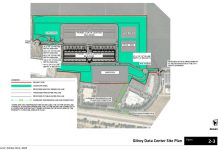Dear Editor,
In the debate over how to pay for the San Jose BART extension,
local leaders are missing the critical question: What is the best
way to improve transit in Santa Clara County?
As a former elected BART director, I’ve learned BART’s
strengths, but it also has its limitations.
Dear Editor,
In the debate over how to pay for the San Jose BART extension, local leaders are missing the critical question: What is the best way to improve transit in Santa Clara County?
As a former elected BART director, I’ve learned BART’s strengths, but it also has its limitations.
Santa Clara County needs 1) better transit connections to the greater Bay Area, and 2) improved local transit service to over 300 square miles of suburbia within the county. Unfortunately, BART is a poor solution to these challenges.
BART carries hundreds of thousands of riders daily, but lacks express service and amenities to carry people comfortably for longer distances. Modern trains, by contrast, can have express service and have more space for riders, bathrooms, tables, electrical outlets, cup holders, coffee to go in the cup, and a Danish pastry to go on the side. These trains can pull long-distance drivers out of their cars.
Santa Clara County should avoid the debacle San Mateo County is now suffering. The BART extension to Millbrae via the San Francisco Airport arrived late and was 30 percent over budget. Lacking enough improvement in speed or convenience, it has failed to attract even half the promised number of riders. County taxpayers are stuck with the bill, and BART and buses have reduced service significantly.
Meeting Santa Clara County’s transit needs requires a different approach – one that stresses speed, quality and affordability. That approach is illustrated by the quiet success of the Amtrak Capitol Corridor service from San Jose to Oakland and Sacramento. Despite the local economic downturn, its ridership has grown 172 percent over the last five years. BART runs both services, so it is not a management problem; it is a problem of the underlying investment.
Standard-gauge rail services such as Caltrain, Amtrak Capitol Corridor and ACE enjoy a huge market for equipment, resulting in market competition, technological advances, and off-the-shelf components. These services cost less, can be built quickly, and can be upgraded easily. Using newer locomotives and signaling technology, standard-gauge trains are capable of speeds 50 percent faster than BART. That’s why the BART extension in Contra Costa County is planned to be built using standard-gauge rail, not BART’s unusual wide gauge.
Groups like the Sierra Club and BayRail Alliance have recently put forth a proposal to optimize use of existing standard-gauge rail to provide high-quality transit. It would serve more people than the BART extension and at half the cost. The proposed Caltrain Metro East connects both San Jose and Palo Alto to Fremont, links to Caltrain, BART and other rail services, and provides direct service to San Jose Mineta airport. Caltrain Metro East would provide faster speeds, more destination options and amenities. Clearly, it deserves the same level of analysis and attention as BART.
The image of BART as a transit cure-all does not hold up under objective analysis. As long as BART technology dominates the debate, Silicon Valley will fail at transit even with a $5 billion investment. Local leaders would do well to examine the alternatives.
Sherman Lewis, Professor Emeritus,
California State University, Hayward











